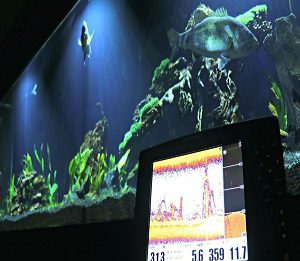 Fishfinders are designed to work in the water, so there are only a few options for testing the fish finder out of water.
Fishfinders are designed to work in the water, so there are only a few options for testing the fish finder out of water.
On the other hand, before putting it on a boat and catching fish, it is necessary to know if they are working correctly.
Most fish finders are recommended for water uses only, and testing them at home can be complex if you do not know the proper method.
Fishfinders are not recommended to use outside the water for a long time, especially the CHIRP fish finder that generates powerful sound waves. Using them out of water for too long can cause them to heat and affect their working.
How To Test Fish Finders At Home?
In this article, we will have a look at methods to test the fish finder at home. These are how you can test your fish finders at home. So let’s get it done.
Check For Visible Anomalies
The first thing to test anything is to look at them carefully. You can test the fish finders at home by checking them thoroughly for any wear and tear. Look for any damaged surfaces so that you can have an idea if they can work properly or not. Checking them properly is the best way to test the fishfinder without risking them.
Check For Vibration
The best way to check the fish finder at home is to check for the vibrations. When the fish finder is turned on, they release sound waves that can cause palpitations. Usually, these sounds can not be heard because they are below the listening frequency of humans, but you can feel them when you touch the transducer. This method only gives the idea of whether the fish finder is working or not.
Check The Voltage
The voltage of the fish finder is another way to tell if the fish finder is working correctly or not. You will need a multimeter and check the voltage of the transducer under no-load conditions. If the reading matches the voltage range provided by the manufacturer, then there are high chance that the fish finder is working well.
Check The Readings
You can test the fish finder in the backyard to get the response but make sure that you turn them on for a short period of time. Using them for a long time outside the water may cause them to malfunction. Use the fish finder in the backyard to check the response. Sound waves do not travel so far in the air and travel pretty slowly as the fish finders are designed to work in water, so using them out of water will result in insane readings. Usually, the margin of reading is 4.5 times. You will get 4.5 times the reading of the actual distance when you are using them in air. This is because there is more time to travel and waves to bounce off of waves.
Check-In The water
Another way to check the fish finder at home is to prevent them in the indoor water source. Swimming pools are the best options for that, but if you do not have them, you can also use them in the water storage tank. Using the fish finder in the bucket is not a good idea because you will not get any meaningful readings. The most minor count of fish finders is 3 to 4 feet, and this water column is required to get authentic tasks.
Conclusion
Testing the fish finders out of the water is not a great idea because using them in this condition for too long may cause them to malfunction even if there is no malfunction in the first place. There are many ways to test the fish finders. The first is to look at them closely for any damages. You can turn them on for a short time and look for the vibration, but this will only tell if it is working or not. You can test the voltage of the fish finder and match it to the provided range by the manufacturer. You can also test them in air or water to know their range estimation.
- What Do You Need for Fishing - August 18, 2022
- How to Find Offshore Fishing Spots - August 18, 2022
- What to Use for Trout Fishing - August 17, 2022
